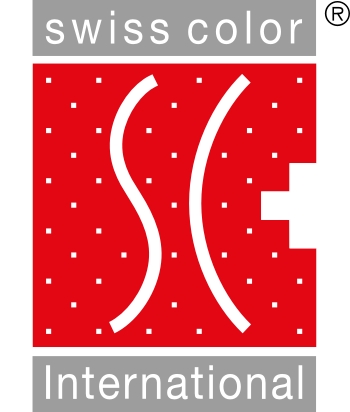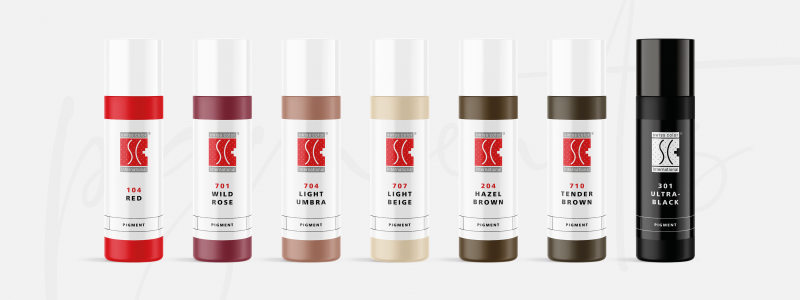Buy top Permanent make up & Microblading colors
Successful Permanent make up depends on high-quality, precisely selected colors that are professionally applied to the customer's skin. The correct and customized selection of pigment shades is an important factor for success, in addition to a high-quality technique. Depending on the treatment area and the client's wishes, Swiss Color offers a wide range of pigmentation colors to choose from.
From black nuances for eyeliner, nude and brown tones for eyebrows and areola to rosé and pink and intense red and violet tones for lips. Paramedical pigmentation, for example of scars or the scalp, is also easily possible with these colors. All Swiss Color shades are Reach-compliant.
What are PMU colors?
PMU colors, rarely also called PMU ink, are color solutions in bottle form that are specially adapted to Permanent make up or Microblading applications, which are easy to dose and can be stored hygienically. The special feature of Permanent make up pigments is the adapted pigment grain size of the individual color particles within the color mixture. This allows an even flow of color to reach the skin via the PMU device and hygiene cartridge. PMU results are therefore more even and long-lasting.
The pigments from Swiss Color, also known as inks in the tattoo sector, are usually mixed ready for use and can also be mixed with each other. Swiss Color pigments meet the highest standards of safety and compatibility. All ingredients are Reach-compliant.
What are natural pigments?
A pigment, also known as ink in tattooing, is a color particle that, together with other ingredients, forms the basis for Permanent make up and Microblading colors, but also for many other color solutions. Common names for these colors are “pigment”, “color”, “PMU color”, “pigmentation color”, “permanent colors” or “PMU ink”.
The origin of each PMU color can be organic, inorganic or mixed. Organic pigments are those based on synthetically produced carbon. Inorganic pigments, on the other hand, are based on metal oxide compounds. Blended or mixed pigments are mixed forms with different mixing ratios of both groups.
Natural pigments are those that are obtained from plant components or extracts or are of animal origin. However, these color pigments tend to be allergenic.
What is a pigment in simple terms?
Pigments are color particles which, together with other ingredients in a carrier liquid, produce a color mixture. In the context of Permanent make up and Microblading, the word “pigment” is used synonymously with “color” or “pigment color”. It describes not only a component of the color solution, but the ready-to-use color itself, which is necessary for creating Permanent make up or Microblading results.
How are color pigments used?
In the field of Permanent make up and Microblading, color pigments are used to emphasize the customer's natural features. Individual consultation and selection are of the utmost importance, as Swiss Color pigments always work in conjunction with the client's natural skin color. For example, with a naturally cool skin tone, cool pigments can achieve a bluish result.
It is therefore important to have a very good sense of color and professional knowledge of color theory. A precise skin tone analysis in daylight and at room temperature is crucial. This is followed by a professional color and type consultation during the consultation prior to a Permanent make up or Microblading application. Depending on the treatment area, eyebrows, lips, eyeliner or paramedical pigmentation, appropriate color suggestions are made based on the skin analysis and the customer's wishes.
If customers suffer from allergies, we always ask them to hand over their allergy pass so that our laboratory can rule out any risks in advance. In addition, we recommend a small test pigmentation in a discreet area, for example behind the ear, to confirm the compatibility of the pigments and all ingredients. After the regeneration phase, the PMU shade and the color development in the skin can be optimally identified and adjusted.
What is the shelf life of PMU colors?
Swiss Color pigments must be used within 12 months of opening. The batch number can always be found on the respective labels. It is recommended to mark the respective pigment bottle with the date of opening after the first opening in order to keep an exact overview of your goods. Please use the pigment shaker first before each pigmentation in order to optimally mix the respective pigment solution in the bottle. For pigment mixtures of at least 2 different pigments or the addition of helps or additives, the Pigment Mixer can be particularly helpful for mixing the pigments or additives in the color pot to form a homogeneous unit.
What causes PMU to fade?
Permanent make up fades automatically due to the skin's ongoing regeneration process if customers do not have any further touch-up treatments. This is due to natural skin regeneration. Consistent skin care and the use of a high-quality sun protection factor are the two most important factors for prolonging the freshness of Permanent make up.
Conversely, excessive, unprotected UV radiation is particularly harmful to the durability of Permanent make up and Microblading. The skin can suffer permanent damage and the color of the PMU can also change. Taking various medications can also promote a fading effect.
Excessive use of peeling products in the area of PMU is also not recommended. Dry, brittle skin and the lack of appropriate moisturizing products can make the skin susceptible to infections and the formation of germs.
What does reach-compliant actually mean?
“REACH” is an acronym that stands for ‘Registration, Evaluation, Authorization and Restriction of Chemicals’. This is the EU-wide regulation issued by the ECHA (European Chemical Agency) concerning the registration, evaluation, authorization and restriction of chemical substances. In the PMU sector, this regulation primarily concerns pigments and additives, whose ingredients have been qualitatively secured and standardized as a result.
Buy top Permanent make up & Microblading colors Successful Permanent make up depends on high-quality, precisely selected colors that are professionally applied to the customer's skin....
read more » Close window Buy top Permanent make up & Microblading colors
Successful Permanent make up depends on high-quality, precisely selected colors that are professionally applied to the customer's skin. The correct and customized selection of pigment shades is an important factor for success, in addition to a high-quality technique. Depending on the treatment area and the client's wishes, Swiss Color offers a wide range of pigmentation colors to choose from.
From black nuances for eyeliner, nude and brown tones for eyebrows and areola to rosé and pink and intense red and violet tones for lips. Paramedical pigmentation, for example of scars or the scalp, is also easily possible with these colors. All Swiss Color shades are Reach-compliant.
What are PMU colors?
PMU colors, rarely also called PMU ink, are color solutions in bottle form that are specially adapted to Permanent make up or Microblading applications, which are easy to dose and can be stored hygienically. The special feature of Permanent make up pigments is the adapted pigment grain size of the individual color particles within the color mixture. This allows an even flow of color to reach the skin via the PMU device and hygiene cartridge. PMU results are therefore more even and long-lasting.
The pigments from Swiss Color, also known as inks in the tattoo sector, are usually mixed ready for use and can also be mixed with each other. Swiss Color pigments meet the highest standards of safety and compatibility. All ingredients are Reach-compliant.
What are natural pigments?
A pigment, also known as ink in tattooing, is a color particle that, together with other ingredients, forms the basis for Permanent make up and Microblading colors, but also for many other color solutions. Common names for these colors are “pigment”, “color”, “PMU color”, “pigmentation color”, “permanent colors” or “PMU ink”.
The origin of each PMU color can be organic, inorganic or mixed. Organic pigments are those based on synthetically produced carbon. Inorganic pigments, on the other hand, are based on metal oxide compounds. Blended or mixed pigments are mixed forms with different mixing ratios of both groups.
Natural pigments are those that are obtained from plant components or extracts or are of animal origin. However, these color pigments tend to be allergenic.
What is a pigment in simple terms?
Pigments are color particles which, together with other ingredients in a carrier liquid, produce a color mixture. In the context of Permanent make up and Microblading, the word “pigment” is used synonymously with “color” or “pigment color”. It describes not only a component of the color solution, but the ready-to-use color itself, which is necessary for creating Permanent make up or Microblading results.
How are color pigments used?
In the field of Permanent make up and Microblading, color pigments are used to emphasize the customer's natural features. Individual consultation and selection are of the utmost importance, as Swiss Color pigments always work in conjunction with the client's natural skin color. For example, with a naturally cool skin tone, cool pigments can achieve a bluish result.
It is therefore important to have a very good sense of color and professional knowledge of color theory. A precise skin tone analysis in daylight and at room temperature is crucial. This is followed by a professional color and type consultation during the consultation prior to a Permanent make up or Microblading application. Depending on the treatment area, eyebrows, lips, eyeliner or paramedical pigmentation, appropriate color suggestions are made based on the skin analysis and the customer's wishes.
If customers suffer from allergies, we always ask them to hand over their allergy pass so that our laboratory can rule out any risks in advance. In addition, we recommend a small test pigmentation in a discreet area, for example behind the ear, to confirm the compatibility of the pigments and all ingredients. After the regeneration phase, the PMU shade and the color development in the skin can be optimally identified and adjusted.
What is the shelf life of PMU colors?
Swiss Color pigments must be used within 12 months of opening. The batch number can always be found on the respective labels. It is recommended to mark the respective pigment bottle with the date of opening after the first opening in order to keep an exact overview of your goods. Please use the pigment shaker first before each pigmentation in order to optimally mix the respective pigment solution in the bottle. For pigment mixtures of at least 2 different pigments or the addition of helps or additives, the Pigment Mixer can be particularly helpful for mixing the pigments or additives in the color pot to form a homogeneous unit.
What causes PMU to fade?
Permanent make up fades automatically due to the skin's ongoing regeneration process if customers do not have any further touch-up treatments. This is due to natural skin regeneration. Consistent skin care and the use of a high-quality sun protection factor are the two most important factors for prolonging the freshness of Permanent make up.
Conversely, excessive, unprotected UV radiation is particularly harmful to the durability of Permanent make up and Microblading. The skin can suffer permanent damage and the color of the PMU can also change. Taking various medications can also promote a fading effect.
Excessive use of peeling products in the area of PMU is also not recommended. Dry, brittle skin and the lack of appropriate moisturizing products can make the skin susceptible to infections and the formation of germs.
What does reach-compliant actually mean?
“REACH” is an acronym that stands for ‘Registration, Evaluation, Authorization and Restriction of Chemicals’. This is the EU-wide regulation issued by the ECHA (European Chemical Agency) concerning the registration, evaluation, authorization and restriction of chemical substances. In the PMU sector, this regulation primarily concerns pigments and additives, whose ingredients have been qualitatively secured and standardized as a result.
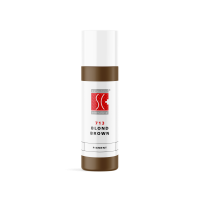 713 Blond Brown - 10 ml Item No.: 713
713 Blond Brown - 10 ml Item No.: 713 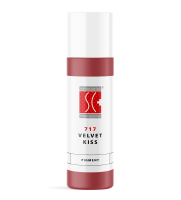 717 Velvet Kiss - 10 ml Item No.: 717
717 Velvet Kiss - 10 ml Item No.: 717 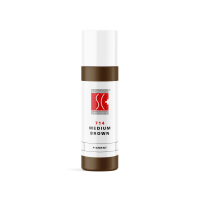 714 Medium Brown - 10 ml Item No.: 714
714 Medium Brown - 10 ml Item No.: 714 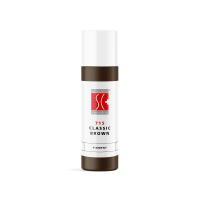 715 Classic Brown - 10 ml Item No.: 715
715 Classic Brown - 10 ml Item No.: 715 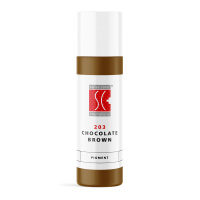 203 Chocolate Brown - 10 ml Item No.: 203
203 Chocolate Brown - 10 ml Item No.: 203 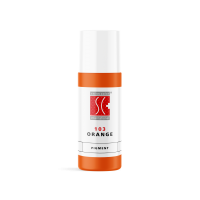 103 Orange - 5 ml Item No.: 103_5
103 Orange - 5 ml Item No.: 103_5 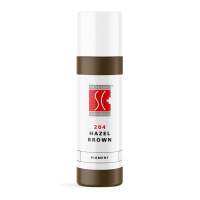 204 Hazel Brown - 10 ml Item No.: 204
204 Hazel Brown - 10 ml Item No.: 204 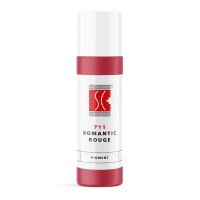 711 Romantic Rouge - 10 ml Item No.: 711
711 Romantic Rouge - 10 ml Item No.: 711 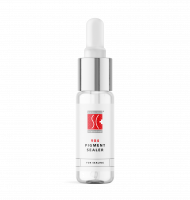 904 Pigment Sealer - 15 ml Item No.: 904
904 Pigment Sealer - 15 ml Item No.: 904 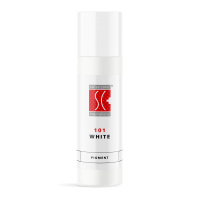 101 White - 10 ml Item No.: 101
101 White - 10 ml Item No.: 101  901 Pigment Solution - 15 ml Item No.: 901
901 Pigment Solution - 15 ml Item No.: 901 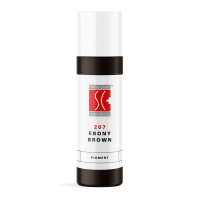 207 Ebony Brown - 10 ml Item No.: 207
207 Ebony Brown - 10 ml Item No.: 207 